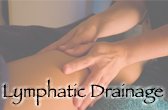
Dry Needling
Dry needling is the use of a very fine acupuncture needle into the muscle Trigger Point. The needle stimulates receptors in the muscle and the nervous system which instruct the muscle to relax. It is a different technique to Acupuncture, though it uses the same very fine needles. Combined with deep tissue massage, it accelerates healing in acute or chronic injuries.
What are the benefits of Dry Needling?
- Increase circulation to the area
- Accelerate tissue healing process
- Decrease pain stimulating release of endorphins and serotonin
- Improve motion range and flexibility
What are the contraindications?
- Needle phobia
- No consent to insert needles
- Thrombocytopenia (bruising easily)
- Infectious disease
How long does the treatment take?
Dry Needling is rarely a stand-alone treatment, other techniques are usually performed during your session to obtain optimal results. The needles are left in place for about 10 minutes to allow the release of neurotransmitters that inhibit pain signals and once removed, massage techniques will be used.
This kind of treatment lasts a little bit longer than one that involves only manual release techniques.
You should consider that if the treated area is small (calves, arms, lower or upper back) a 45 minutes session will suffice, if more than one district (upper back and neck, legs and lower back) need attention, you will need a minimum of 60 minutes. An effective full body treatment requires 90 minutes.
How often should you have it?
You will always discuss the best treatment plan with your therapist. Treatment’s frequency will be adjusted according to the issues and goals you present.
The first visits can be close, about 3-4 days apart. Dry Needling effects last for about 3 days after your session. Once the acute pain is decreased you will be re-assessed and enter a maintenance regime.
Can Dry Needling cause undesired effects?
Unfortunately yes. They include:
- Bruising
- Bleeding
- Dizziness
- Pain
- Muscle aching
Difference between Dry Needling and Acupuncture
Dry Needling is used in western medicine whereas Acupuncture is part of Traditional Chinese Medicine (TCM).
Its purpose is to de-activate myofascial Trigger Points stimulating mechanical and biochemical responses in our body that lead to pain reduction and muscle tension release.
On the other hand, Acupuncture is a more holistic alternative therapy. Needles are inserted in specific points that are mainly found along meridians. In TCM, a life force energy called qi flows along the meridians. A disease is a disharmony in the energy flow and needles are used to re-balance the qi circulation.
Dry Needling is practiced by physical therapists (physios, chiros, osteos, remedial massage therapists) whereas Acupuncture is performed by TCM practitioners.
How much does Dry Needling cost?
There is no additional fee for Dry Needling per-se but usually a session lasts longer because no other manual release technique can be used while the needles are in. Prices are based on treatment’s length. Check them here.
Is Dry Needling eligible for health fund rebates?
Yes. Dry Needling used in a Remedial Massage Treatment is eligible for rebates. If you have private health and your extras include Remedial Massage you will be able to claim your treatment with your health fund. All health funds are accepted.
An invoice with all necessary details will be emailed to you after your session.
Ask For More Information
BOOK YOUR INITIAL CONSULTATION
Don't miss the opportunity to feel wonderful!INITIAL CONSULTATION
Book your treatment. At least one hour recommended.








